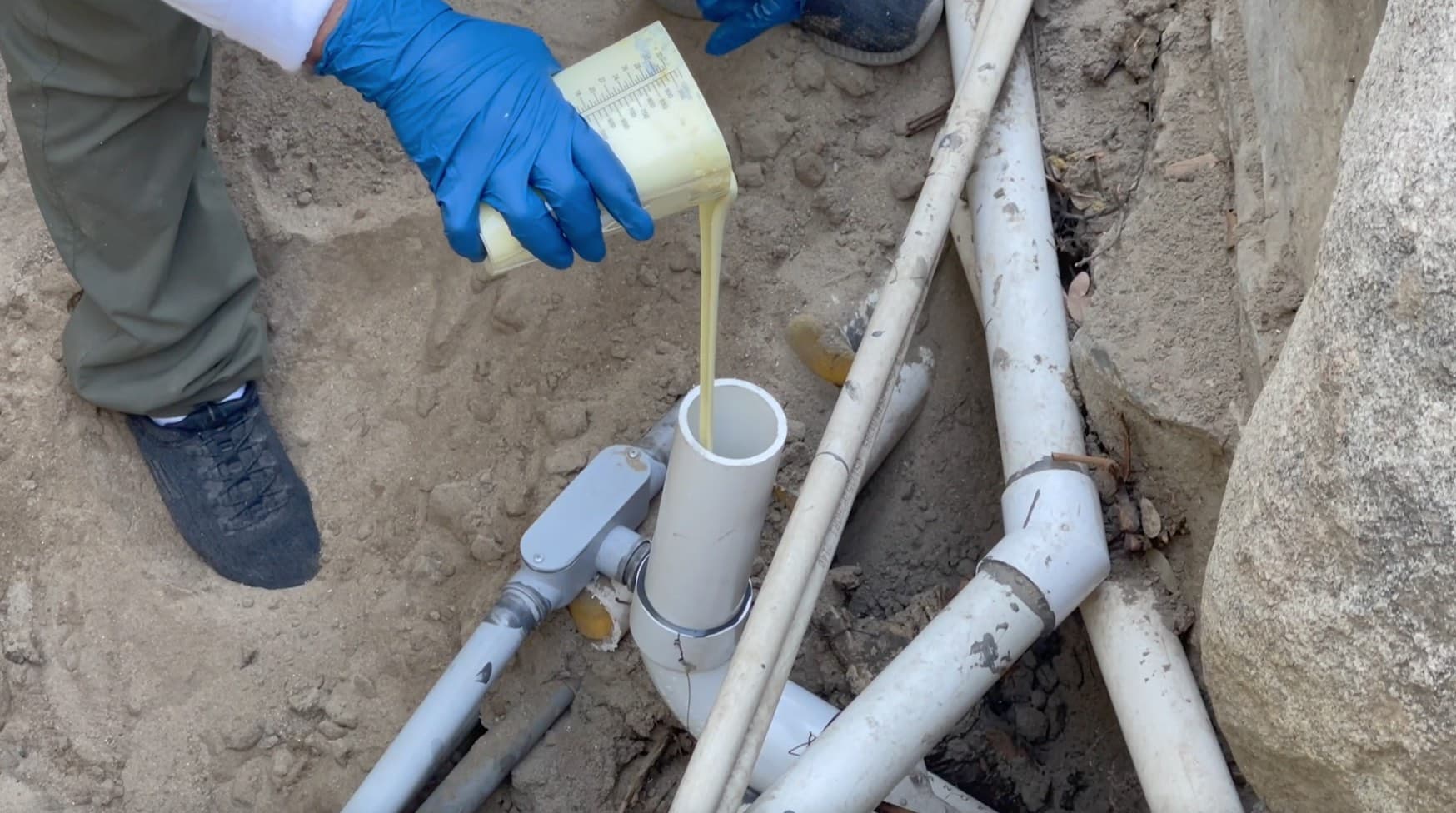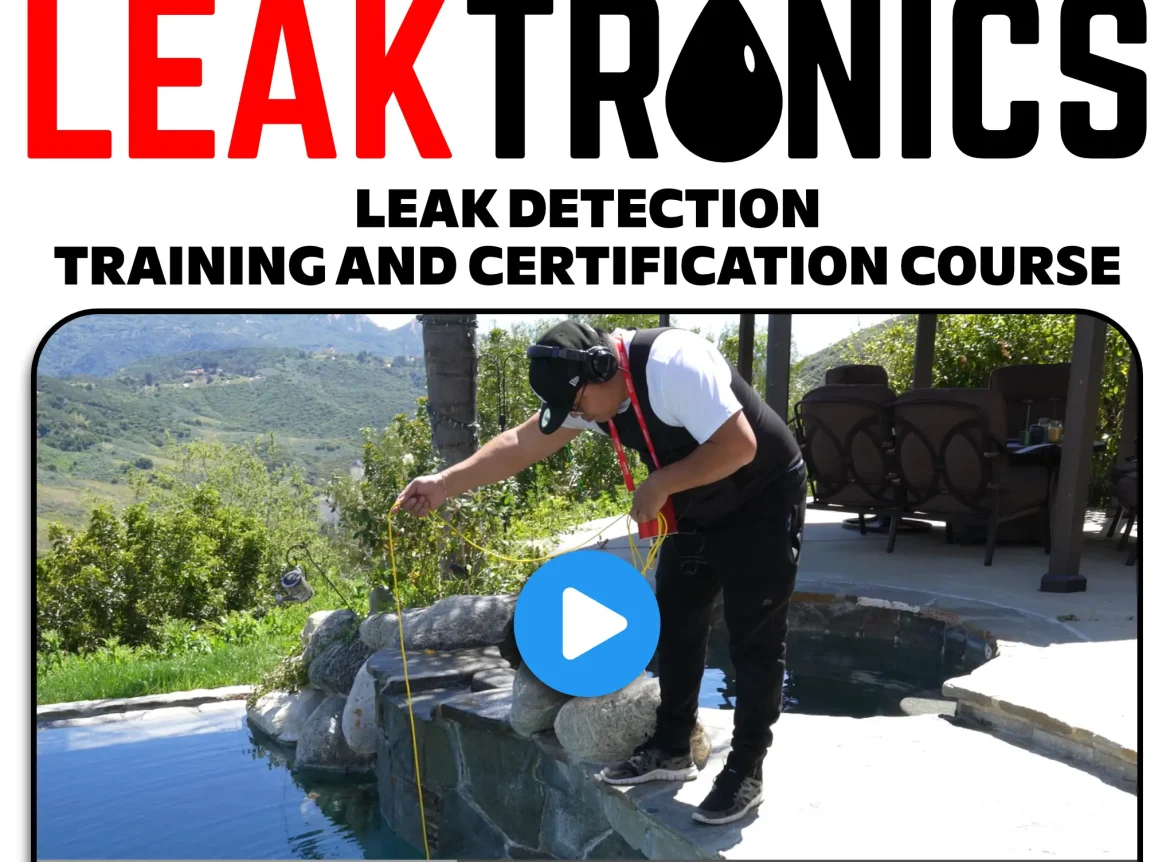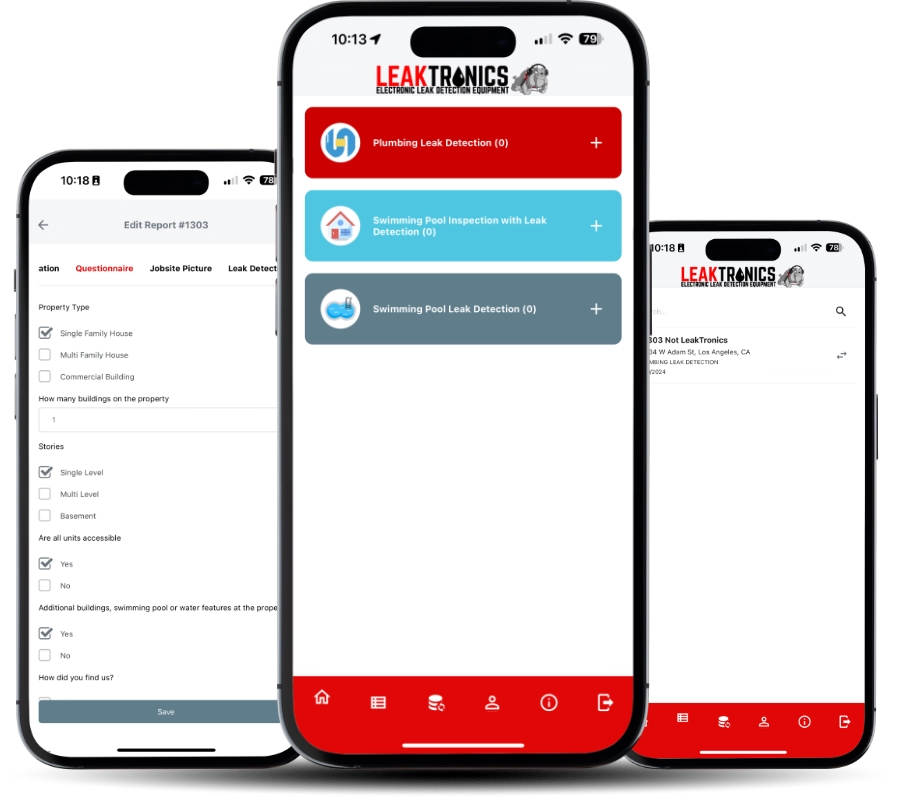Not sure about Pipepoxy for your side suction pipe repair job? Maybe you’re looking for a product for pipe repair without cutting or digging. Consider this Case Study – Side Suction Pipe Repair for Pipepoxy’s pipe repair system, which we used to repair a water fixture leak caused by tree root damage to one of the main pipes.
Darren with Raytek Leak Detection in Bakersfield, CA conducted a thorough inspection and noticed there was a tree planted near where the pipes stubbed up. He completed an in-depth leak detection and identified the location of the leak in the side suction using our LeakTronics equipment. It was about three-quarters of a separation of the crack pipe. He drained the pool, located the leak, and we came up there to run the Pipepoxy system for him.
As usual, we like to confirm the location of the leak with our Hand Held Video Pro 1.5-inch Camera before proceeding to repair the pipes with the Pipepoxy system for trenchless pipe repair. Let’s take a look at how Pipepoxy was applied to this recent pipe repair job.
How Pipepoxy Saved the Day: A Case Study
For this particular job, we had dual-side suction that ran through a waterfall. A water feature pump was running with a significant amount of root damage. A cracked pipe and root damage from a tree that was removed recently caused all of the damage to the waterfall.
We started like we always do by blow drying out the pipes to get them as dry as possible. Next, we go in with a camera. We’re also comparing our camera with Darren’s. He took actual photos of the pipe system and it confirmed what we need to do. We needed to go back about eight feet to coat all three pipes. We went in with our LeakTronics sanding disk to get it completely primed up, scratched up, and ready to go. By running that sanding disk, we also create some dust in the pipeline. So we took our blower and blew that dust back out of the pipe again to get it completely dust free. Doing so enables the Pipepoxy material to adhere to a really roughed-up and clean pipe.
Next, we set up our brush and mixed our Pipepoxy 3-part Accumix. From there, we poured in the right amount as specified in the Pipepoxy Mixing Chart. The pipe was two and a half inches in diameter and as a result, it took more than one unit of Pipepoxy Accumix. For this particular job, we used two full units. However, we didn’t have to pour the whole second mix into the pipe.
We poured it in and then we sent our brush in. The brush pushed all the Accumix forward until we passed the area of the actual leak. We wanted to coat a little before and a little after– we coated the whole way before and a foot or two after the actual leak. After we finished brushing the pipe to coat it, we hooked up our dryer and allowed it to run for four hours.
How To Clean The Pipepoxy Equipment Post-Application
Next, we spent some time on the cleanup. To start, soaked the brush head in paint thinner. Typically, we use Goo Off or a generic type of paint thinner. From there, we brush it on, get the heavy gunk off, and then soak it once more while we take a rag and wipe down our cable. The goal is to get all of the heavy material off. On many of the jobs that we take on that are similar to this one, if it’s really heavy, we will take the front cap off of our unit and scrape it out with a screwdriver and a ragged tip on the end of it. Doing so will get it sufficiently clean and ready for the next application.
To finish off the job, we assemble everything back together again. The Pipepoxy we injected sealed the leak. That’s how we fix dual-side suction with a two-and-a-half-inch pipeline using Pipepoxy.
Don’t forget to check out the LeakTronics blog for more in-depth case studies. For more demonstration videos, check out our YouTube channel.






